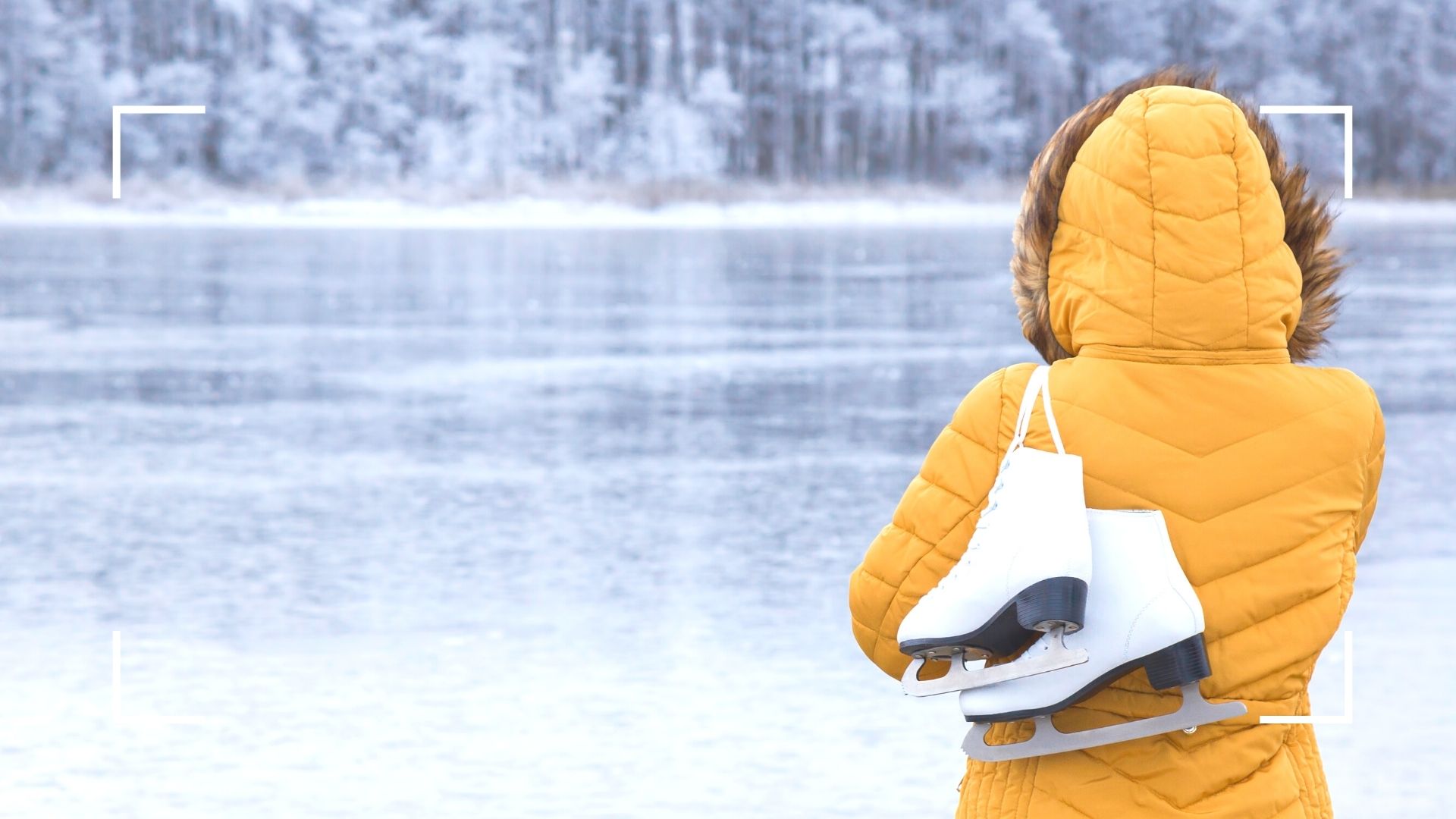Ice skating has fantastic body benefits—health experts share how it can boost fitness for women
Ice skating has many health benefits for your heart and body strength, as our experts explain


Graceful, powerful, and nimble, professional ice skaters are often some of the fittest people around. Ice skating has been practiced in US and UK for years, but it was only properly formed as a sport in the 1740s by the Edinburgh Skating Club. Since then, it’s gained huge popularity and is loved by both adults and children.
Much like the benefits of swimming and other leisure activities like roller skating or surfing, ice skating offers a full-body workout, while trying a fun activity. "Skating has numerous benefits relating to your wellness," says fitness expert Nataly Komova."It can also help achieve other fitness objectives and increase your muscle mass and endurance for other sports." Taking to the ice rink is more than just a leisure activity, it involves stamina, strength, and balance. If you’re a fan of ITV’s Dancing On Ice, or you just enjoy testing your balance in the pop-up ice rinks that spring up each winter, lacing up your skates could be a fun activity to boost your fitness levels.
Is ice skating good exercise?
There are plenty of health benefits to ice skating. Not only does staying upright on the ice challenge your balance, but keeping your muscles engaged for long periods of time means that it's great for strength training. "Skaters exercise almost all body muscles," says Komova. "This is partly because of the synchronized leg movement that happens while you skate, which in the long run, boosts joint flexibility. It’s also good for the heart as the movement and exertion improve your circulation and your heart rate." According to our experts, there are five key health benefits of ice skating—sculpting, stronger muscles and bone density, cardio workout
1. Sculpting benefits
Despite it seeming like your legs do most of the work, ice skating impacts all your major muscle groups—from your quads and calves to your core and your shoulders. Engaging these muscles can lead to long-term benefits, as research from the University Hospital of Umeå in Sweden, found that the strength of pro skaters quadriceps (the front and side quad muscles) was a result of the number of hours they spent training on the rink, each week.
2. Stronger muscles and bone density
"Ice skating builds muscles in your legs which make them stronger, and less prone to injury," says PT Lucy Arnold. "This also makes it a good cross-training exercise for runners, as the movement is very similar." Ice skating is also great for increasing bone density, which is a good insurance policy against loss as we age. According to a study in the Journal of Bone and Mineral Research, the bone density of young ice hockey players increased after just two and a half years of doing the sport, with further gains after five years. However, consistency is key, as the study also showed that after some of the participants stopped playing regularly, their bone density decreased, so you’ll have to stay committed to ice skating if you want to see continued results.
3. Cardio workout

"Ice skating is a good cardiovascular workout, which improves your overall health and wellbeing," says Arnold. While advanced skaters will likely burn more calories than beginners taking it slow, taking to the rink is a great way to get your heart pumping and the blood circulating through your body. In fact, in a study by the European Journal of Applied Physiology, it was revealed that skaters could produce the same level of aerobic power skating as they would cycling, meaning that this low-impact exercise can be a fantastic workout for your heart.
"Apart from muscle strength, skating also helps improve endurance," says Komova. "Adding a few inclined running sessions (uphill) can train your body and heart muscles to efficiently utilize your body’s stored energy. You can go for a longer amount of time when skating without exhausting yourself."
Sign up for the woman&home newsletter
Sign up to our free daily email for the latest royal and entertainment news, interesting opinion, expert advice on styling and beauty trends, and no-nonsense guides to the health and wellness questions you want answered.
4. Balance builder
Much like roller skating, ice skating involves a degree of balance to keep you upright and moving forwards. "Ice skating can improve balance and coordination,” adds Arnold. "This is because you’re using your core to maintain stability and the muscles in your ankles and lower legs to maneuver around." If done consistently, practicing ice skating regularly can be a great way to boost your balance and future-proof your coordination as you age.
5. Social gains
"Ice skating is a good social activity and there are lots of clubs up and down the country," says Arnold. "It can be a really good way of benefiting your mental health, as you’ll spend time with others and make friends." Spending time in the fresh air has also been proven to help your brain. According to the mental health charity Mind, being in the outdoors can improve your mood, reduce feelings of stress and even boost your self-esteem, making ice skating, with its outdoor rinks, a great activity for your mental fitness as well as your physical.
How many calories does ice skating burn?
If you’re wanting to lose weight, ice skating can be a good workout. Research by Harvard Medical School shows that a person weighing around 155 pounds can burn anywhere between 210 and 311 calories by doing half an hour of ice skating. Of course, the longer and harder you skate, the more calories you’ll eventually burn, so make sure you fuel up properly on protein and complex carbs for sustained energy before hitting the ice.
How to ice skate safely
A lot of beginner ice skaters are concerned about the inevitable falls. However, with the right safety equipment, this shouldn’t be too much of a concern. The items you’ll need to skate safely include, but aren’t limited to, a helmet, warm clothing such as a hat and gloves, and in some circumstances, knee pads and shin protectors.
Getting the right ice skates is also key – skates shouldn’t feel too loose or too tight, as this can cause you to wobble on the ice and create blisters. It’s also essential to try and stretch properly afterward, as engaging your muscles for long periods of time can cause them to tense up and remain tight. A yoga session (if you're not familiar with yoga you could try a yoga for beginners class from our guide) post-skate can be a great way to relax your joints and stretch your muscles.
For more information on finding an ice rink near you, head to British Ice Skating.
w&h thanks Nataly Komova, RD and fitness expert for JustCBD, and Lucy Arnold, PT and founder of Lucy Locket Loves.
With five years of experience working across print and digital publications, Stacey is a journalist who specializes in writing about the latest developments in health and wellbeing. She has also previously written for Women’s Health, Get The Gloss, Fit & Well, Stylist, and Natural Health magazine, covering current health trends and interviewing leading figures in the wellness space.
When she’s not talking to health experts, you can probably find her hiking somewhere in the Welsh countryside or near the coast. Her favorite two ways to switch off are a Pilates class and a glass of wine with a home-cooked meal.
-
 Do you know what your stems are saying? These are the most popular flowers and what they symbolise
Do you know what your stems are saying? These are the most popular flowers and what they symboliseI break down different flowers and what they symbolise so that you can say more whilst speaking less with a truly beautiful bouquet
By Laura Honey
-
 Celebrities who built their looks around a simple, timeless white shirt
Celebrities who built their looks around a simple, timeless white shirtA white shirt should be in every woman's wardrobe - and these celebrities prove all the ways to expertly style one
By Jack Slater